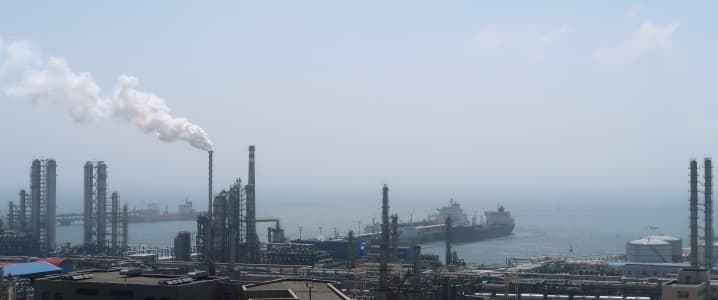Chinese refineries returned to record-high processing rates last month driven by the so-called teapots, which added a substantial amount of new refining capacity.
According to Reuters, the average daily throughput in April stood at 12.68 million barrels, up 5 percent from a year earlier. For the January to April period, the average was 12.62 million bpd, up 4.7 percent on the year. In January this year, CNPC, the country’s largest oil company, said it expected 12.68 million bpd to be the average processing rate for local refineries this year as a whole.
This is an interesting development given that this year, the initial round of independent refiner quotas were lower, as the local market sinks in a glut of fuels and the regional market begins to feel the margin squeeze of cheap Chinese fuel exports. Fuel production margins are not what they used to be, and yet independent refiners continue to add capacity.
According to an analysis from Bloomberg released in March, this year will see refining capacity additions of as much as 890,000 bpd. Almost half of this will come from a new 400,000-bpd refinery property of teapot Hengli Petrochemical Co. which began trial runs at the facility five months ago. Full capacity is expected to be reached later in May.
Imports are also on the rise as domestic oil production continues its steady decline, forcing Chinese oil majors to look for replacement production overseas. In April, these averaged 10.64 million bpd, which came as a surprise to analysts as the 11-percent year-on-year increase came amid refinery maintenance activities and low local fuel demand.
Right now, China is once again in the oil spotlight after the latest escalation with Washington that saw the U.S. increase tariffs from 10 percent to 25 percent on US$200 billion of Chinese goods, prompting Beijing to respond with an equal increase in the rate it taxes U.S. LNG imports. For now, however, there has been no word of China imposing tariffs on U.S. oil.
By Irina Slav for Oilprice.com
More Top Reads From Oilprice.com:
- The IEA's Dire Warning For Energy Markets
- Why Oil Stock Dividends Are Soaring This Year
- Trump’s New Plan To Spark A California Oil Boom



















It also confirms that China’s oil demand is not being dented by the trade war with the United States. If China was prevented by US tariffs from exporting $800-bn worth of goods to the United States, it can sell them somewhere else. However, for the United States to replace the cheap Chinese exports with more expensive imports from elsewhere would add additional costs to American consumers, ramp up domestic inflation, increase US budget deficit and add an estimated 2.35% to the $22 trillion of US outstanding debts.
Dr Mamdouh G Salameh
International Oil Economist
Visiting Professor of Energy Economics at ESCP Europe Business School, London